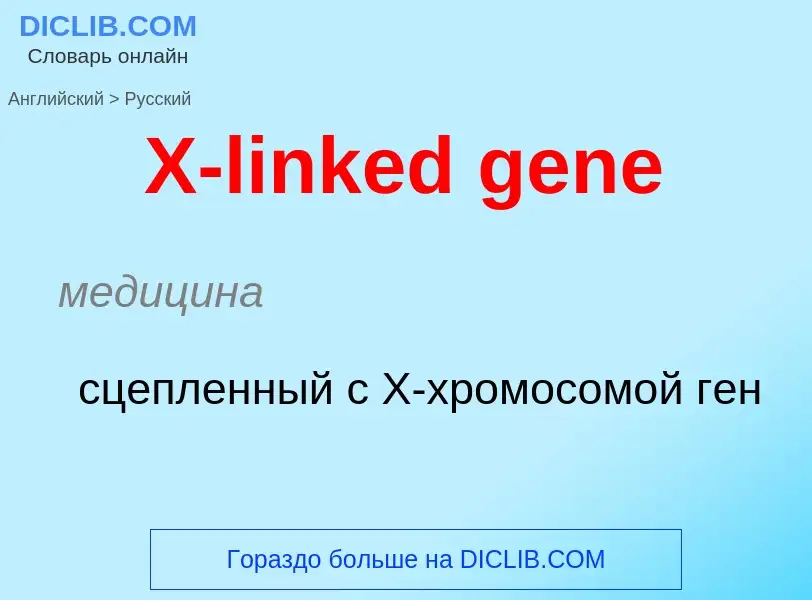Traducción y análisis de palabras por inteligencia artificial ChatGPT
En esta página puede obtener un análisis detallado de una palabra o frase, producido utilizando la mejor tecnología de inteligencia artificial hasta la fecha:
- cómo se usa la palabra
- frecuencia de uso
- se utiliza con más frecuencia en el habla oral o escrita
- opciones de traducción
- ejemplos de uso (varias frases con traducción)
- etimología
X-linked gene - traducción al Inglés
медицина
сцепленный с X-хромосомой ген
общая лексика
ген
сцепленный с полом
медицина
сцепленный с полом ген
общая лексика
сцепление с полом
Definición
Wikipedia
Sex linked describes the sex-specific reading patterns of inheritance and presentation when a gene mutation (allele) is present on a sex chromosome (allosome) rather than a non-sex chromosome (autosome). In humans, these are termed X-linked recessive, X-linked dominant and Y-linked. The inheritance and presentation of all three differ depending on the sex of both the parent and the child. This makes them characteristically different from autosomal dominance and recessiveness.
There are many more X-linked conditions than Y-linked conditions, since humans have several times as many genes on the X chromosome than the Y chromosome. Only females are able to be carriers for X-linked conditions; males will always be affected by any X-linked condition, since they have no second X chromosome with a healthy copy of the gene. As such, X-linked recessive conditions affect males much more commonly than females.
In X-linked recessive inheritance, a son born to a carrier mother and an unaffected father has a 50% chance of being affected, while a daughter has a 50% chance of being a carrier, however a fraction of carriers may display a milder (or even full) form of the condition due to a phenomenon known as skewed X-inactivation, in which the normal process of inactivating half of the female body's X chromosomes preferably targets a certain parent's X chromosome (the father's in this case). If the father is affected, the son will not be affected, as he does not inherit the father's X chromosome, but the daughter will always be a carrier (and may occasionally present with symptoms due to aforementioned skewed X-inactivation).
In X-linked dominant inheritance, a son or daughter born to an affected mother and an unaffected father both have a 50% chance of being affected (though a few X-linked dominant conditions are embryonic lethal for the son, making them appear to only occur in females). If the father is affected, the son will always be unaffected, but the daughter will always be affected. A Y-linked condition will only be inherited from father to son and will always affect every generation.
The inheritance patterns are different in animals that use sex-determination systems other than XY. In the ZW sex-determination system used by birds, the mammalian pattern is reversed, since the male is the homogametic sex (ZZ) and the female is heterogametic (ZW).
In classical genetics, a mating experiment called a reciprocal cross is performed to test if an animal's trait is sex-linked.


